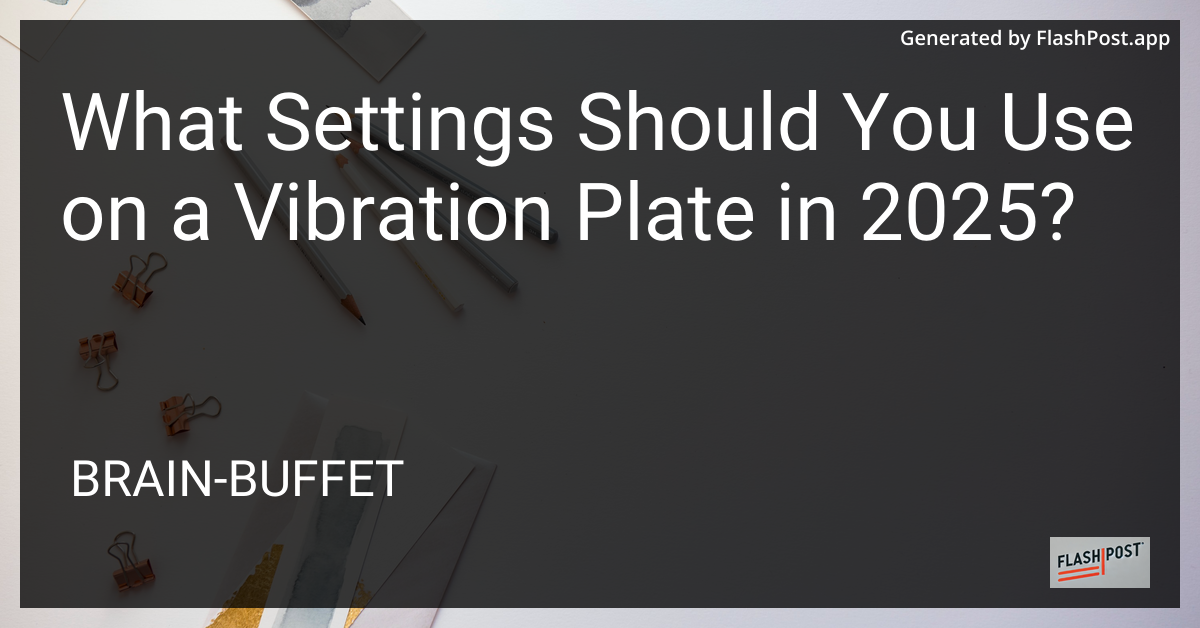What Settings Should You Use on a Vibration Plate in 2025?

The vibration plate continues to be a pivotal tool for fitness enthusiasts seeking to enhance their workouts. This revolutionary device can improve muscle strength, flexibility, and circulation with minimal joint impact. As technology evolves, it's important to understand the settings that adjust to your fitness goals efficiently in 2025. Here's your comprehensive guide to optimizing your vibration plate settings.
Frequency Settings: Low, Medium, High
Choosing the right frequency on a vibration plate depends on your desired outcomes:
Low Frequency (5-12 Hz): Ideal for beginners or seniors looking to familiarize themselves with the equipment. This setting aids in balance and flexibility. For more on senior-friendly fitness technology, consider exploring fitness apps for seniors in 2025.
Medium Frequency (12-20 Hz): Suitable for general fitness routines. Helps in enhancing core strength and overall muscle toning. A balanced setting that offers versatile fitness benefits. Pair with virtual fitness classes in 2025 for a comprehensive workout approach.
High Frequency (20-40 Hz): Targeted towards advanced users seeking to improve muscle mass and definition. This high-intensity setting can be used for short durations to maximize muscle contraction.
Amplitude Settings: Low and High
Low Amplitude: Offers gentle vibrations suitable for rehab exercises, beginners, or for those focusing on flexibility and circulation improvements. It's less intimidating and easier on the joints.
High Amplitude: Provides more intense vibrations, perfect for vigorous workout seekers. It maximizes muscle engagement and enhances fat-burning processes. Pair this setting with recommended fitness balls for stability to comprehensively engage stabilizer muscles.
Duration and Positioning
Duration: Beginners should start with sessions lasting 5-10 minutes, gradually increasing as endurance builds. Advanced users can aim for 15-20 minutes per session, ensuring not to exceed 30 minutes to prevent overexertion.
Positioning: Use a variety of positions to target different muscle groups. Maintain proper posture to maximize benefits and prevent injury. Standing, squats, push-ups, and lunges are popular positions to explore.
Safety Tips
Consult a Professional: Always consult a healthcare provider before starting any new exercise regimen, especially if it's high intensity.
Device Calibration: Ensure your vibration plate is calibrated correctly and placed on a stable surface.
Use Moderate Speeds Initially: Allow your body to adapt to the vibration gradually to prevent discomfort and potential injury.
By optimizing these settings, you can effectively utilize your vibration plate in 2025 to meet your evolving fitness goals. As with any fitness tool, consistency and correct usage are key to unlocking its full potential.